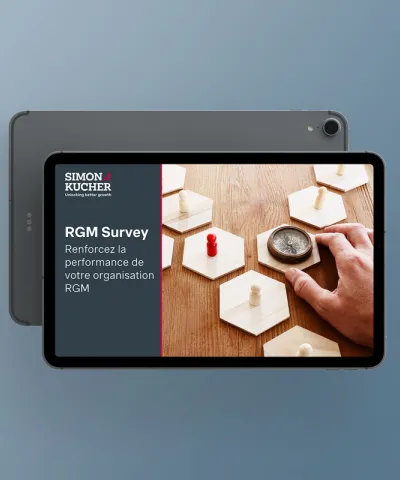The healthcare industry is still struggling with the effects from the COVID-19 crisis. A key consequence: Healthcare providers are in financial troubles and plan to cut costs, for instance regarding the commercial partnerships with MedTech companies. To counter this development, MedTech firms have to transform from mere product suppliers to solution providers.
In the first part of our article series, we outlined why it’s high time now for MedTech companies to focus on this transition. However, once the decision is made, how should MedTech suppliers get started? There are two vital elements when developing a successful strategic business approach for becoming a solution provider. MedTech companies need to
- define their positioning
- determine their value proposition
Only when those two aspects are worked out, an effective strategy can be developed.
1. Selecting your position: cost leadership or partnership
When defining their company’s positioning, MedTech suppliers need to focus more strongly than ever on their customers. To secure sustainable success, customers’ wishes and challenges need to be at the core of MedTech companies’ business models. From our industry experience we know that most healthcare providers’ requirements center around those four areas:
- Lower prices for products to achieve cost reductions
- Simplicity via standardization to improve workflow and limit potential for error
- Efficiency to increase throughput and enable growth
- Quality enhancement where it really matters (avoiding penalties, public recognition, etc.)
Those needs can be met with one of the two future-winning options: MedTech companies can decide to either gain cost leadership as a pure product supplier or become a real partner as a solution provider. As a product supplier, MedTech companies should aim to offer the most competitive prices. This can be achieved through cost optimization (e.g. via scaling effects and lean manufacturing). In addition, enabling one-stop-shopping for your customers by offering complete sector portfolios increases simplicity. If your company’ goal is rather to become a solution provider, you can demonstrate your ability as a partner by offering holistic solutions for healthcare providers’ current challenges that include relevant services that increase both their efficiency as well as the quality of their offering.

2. Determine your value proposition to elevate supplier relationship towards partnership
So, how can you make sure to stand out of the competition? The solution for this challenge is to define your MedTech company’s value proposition. What differentiates your offering from those of your competitors? In which area does your company offer the most value-added? Which healthcare providers’ needs can be met especially well by your products and services?
To find the answers to these questions, let’s take a closer look at the most common pressing needs of healthcare providers, the corresponding solution archetypes to fulfil them, and best practices examples how to apply those solutions:
- Reduced supply chain complexity through category standardization:
Financial incentives are granted if vendors standardize whole product families in a certain product category (e.g. catheters). Additional services are offered to help optimize appropriate selection and usage. - Higher budgeting certainty via alignment of cost and reimbursement through procedural pricing:
A flat fee is charged per patient regardless of the specific type of product in a category used (e.g. different hernia meshes) or number (e.g. number of stents in a PCA). Additional services are offered to help optimize appropriate selection and usage. - Cost savings and simplification through procedure bundles:
MedTech companies offer bundles at fixed prices that include multiple product and/or service offerings for specific procedures (e.g. hernia mesh, suture, endoscopic stapler) or operating equipment (e.g. cardiac resynchronization therapy defibrillator incl. programming service). - Cost certainty and financial independence of clinical usage decisions through subscription pricing:
MedTech firms switch their monetization models from a pay-per-unit to a pay-per-time period approach – e.g. they charge a monthly fee for hospitals’ hemodynamic monitoring needs. - Guaranteed positive RoI for providers through financial outcomes guarantee:
Net pricing of a product/service offered by a MedTech company is tied to the observed financial benefits that originate in the usage of said offering. - Guaranteed improved clinical outcomes through clinical outcomes guarantee:
Net pricing of a product/service offered by a MedTech company is tied to the realized clinical parameters that originate in the usage of said offering. - Higher revenue potential and competitive differentiation through practice development services:
MedTech companies provide outbound services (e.g. referral management) that are either directly or indirectly monetized through commitment on product usage. - Increased efficiency through managed services:
To enable providers to focus on patient care as a core competency, MedTech companies take full responsibility for certain elements of a service. These get compensated via a fixed fee or specific purchase commitments (e.g. a MedTech firm runs a central sterilization department for an annual fee). - Reduced risks through operator models:
MedTech companies engage in operator models by vertically integrating and managing specific departments with full financial exposure (e.g. a vendor is running the imaging department or cath lab) in order to reduce financial risks of clinical support services.
Those a only a few of the requirements healthcare providers often mention, but as shown above, they provide ample opportunity for MedTech companies to distinguish themselves from the competition. By offering innovative and proven solutions that address their customers’ needs, MedTech suppliers can elevate their business relationship status towards a real partnership.
Making the effort pays off: Growth instead of cost pressure
And this is worth the effort: Becoming a partner to healthcare providers by offering holistic solutions enables MedTech companies not only to divert emerging cost pressure but also to ensure sustainable growth for the future. This becomes obvious when looking at current and predicted spending structure of healthcare providers.

As you can see, service revenue is only a relatively small percentage of overall revenue because service offerings are limited and in addition often tied to a purchased physical product. Even if MedTech companies manage to deliver services to healthcare providers, they’re often not monetized separately but provided free of charge. Regarding the revenues yielded through product offerings, there are increasing challenges here as well. Product prices are going down because providers need to yield savings. In addition to this, the innovation pipeline has dried up and largely incremental innovation will not allow MedTech companies to reset price levels. Also, physicians’ reduced ability to independently select products drives supplier and product consolidation, leaving large-scale players in the best position to win tender wars.
To gain higher revenues in the future, this split has to change. Since there is limited profit upside potential in established stand-alone product offerings and limited provider willingness to pay for stand-alone service offerings, MedTech companies have to find another way. One path forward is to add solutions or round out their portfolios with complementary services and products to create end-to-end solutions meeting a broader set of provider needs. This can unlock willingness-to-pay thresholds and ultimately yield more income. Experts predict that soon, spend on products will decrease as a result of lower prices meaning reduced profits. Stand-alone services will account for a larger share of MedTech’s revenues by being more systematically monetized. In addition to these, solutions will represent a significant part of MedTech’s future revenue base – often combining products, services and new monetization models in a partnership approach.
Read more from this series:
Part 1: From Product Supplier to Solution Provider: Why MedTech Companies Need to Act Now!
Part 3: From Product Supplier to Solution Provider: How MedTech Firms Start Their Transformation Journey
Part 4: From Product Supplier to Solution Provider: How 2 Medtech Firms Accomplished the Transformation








